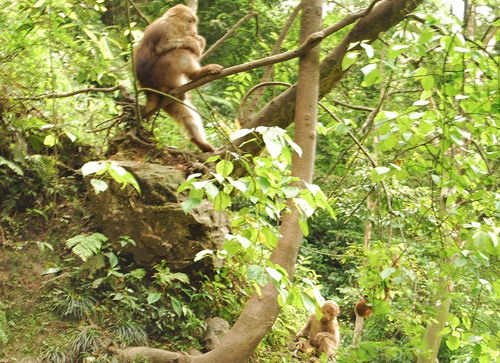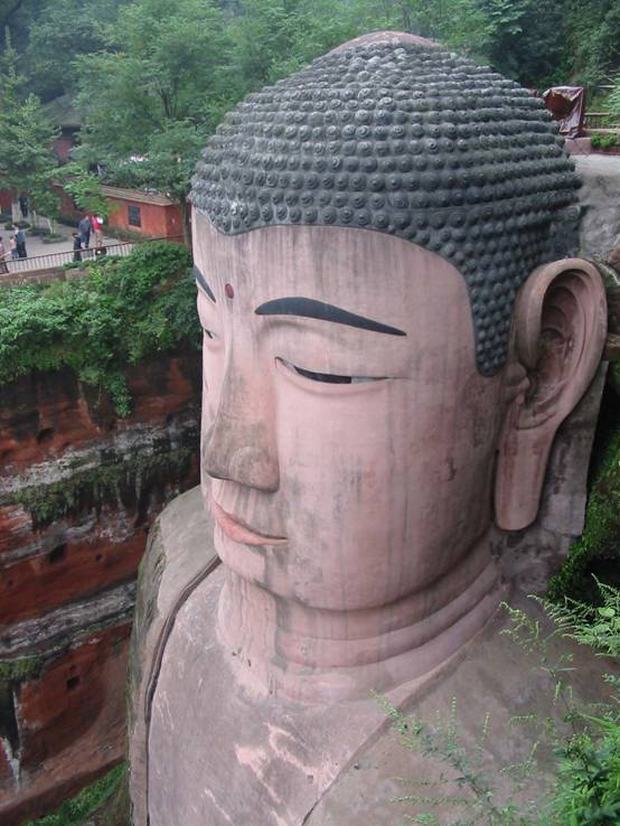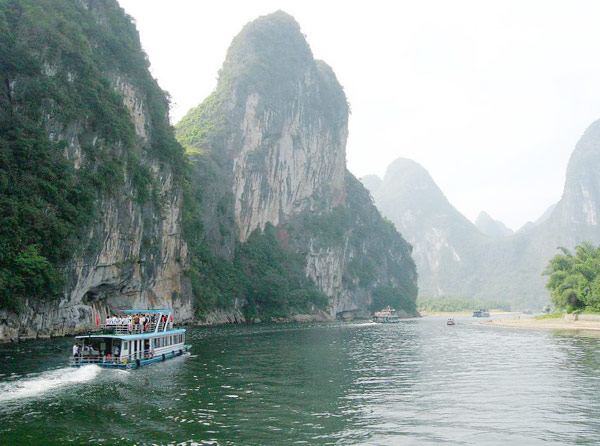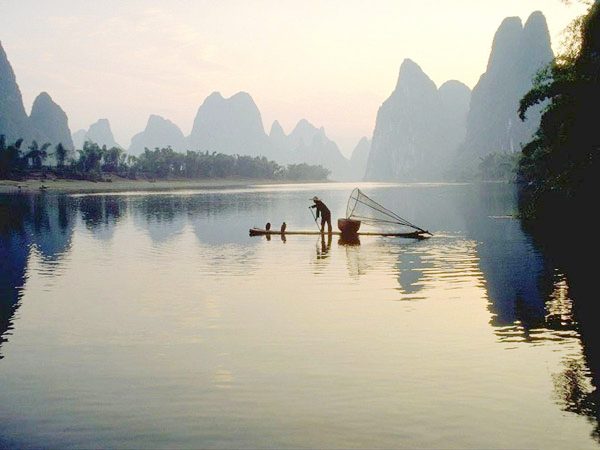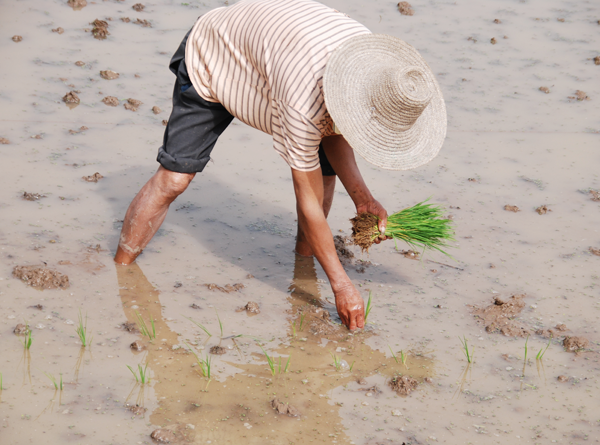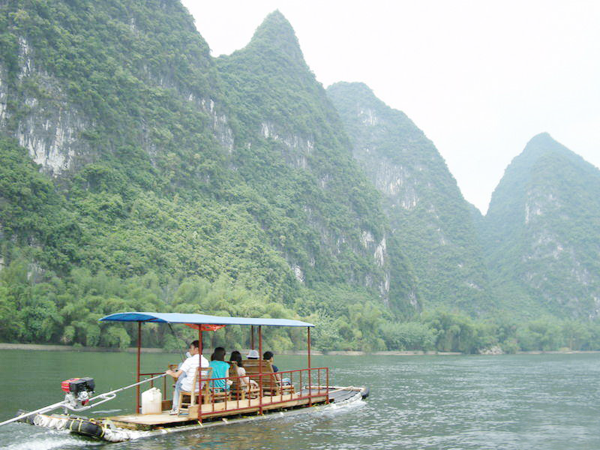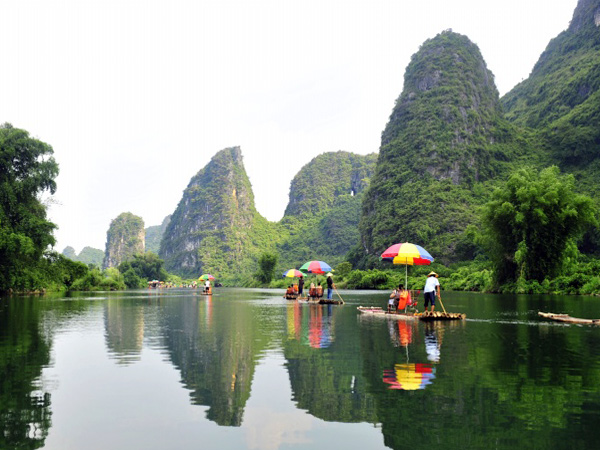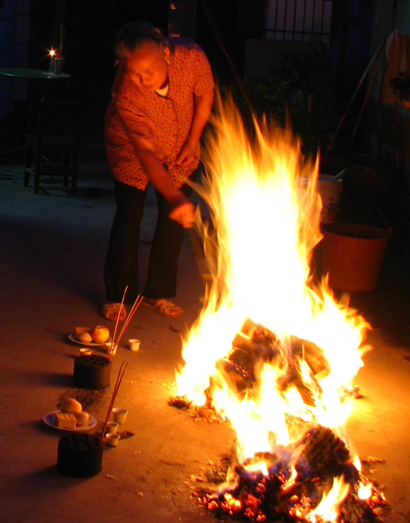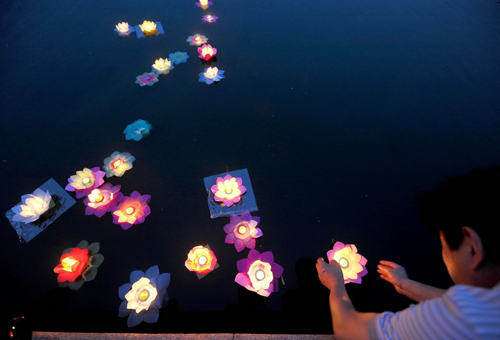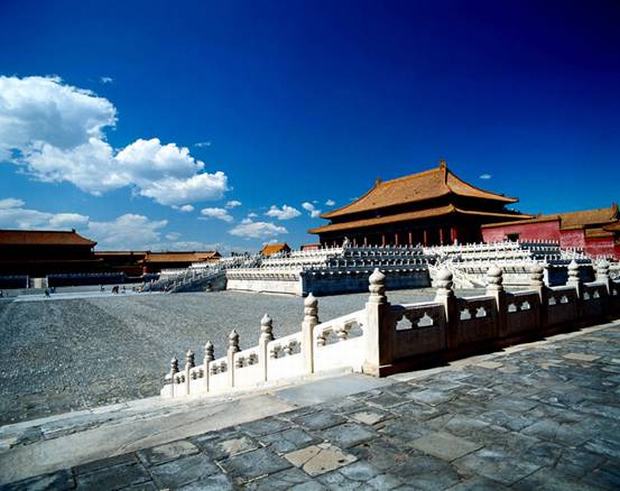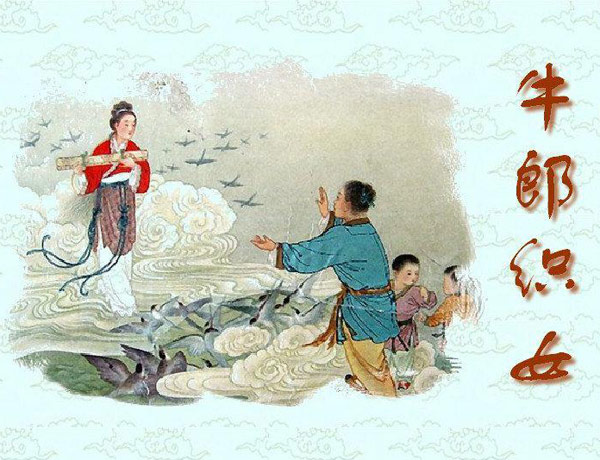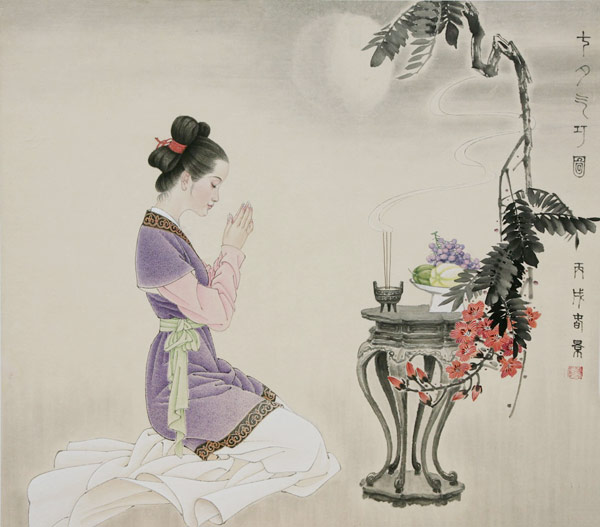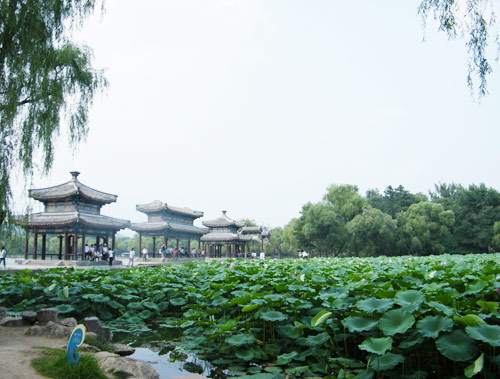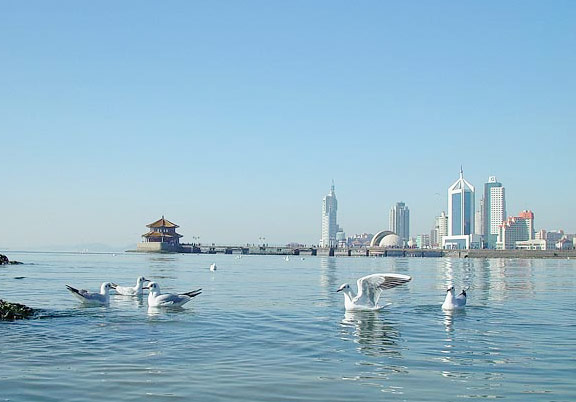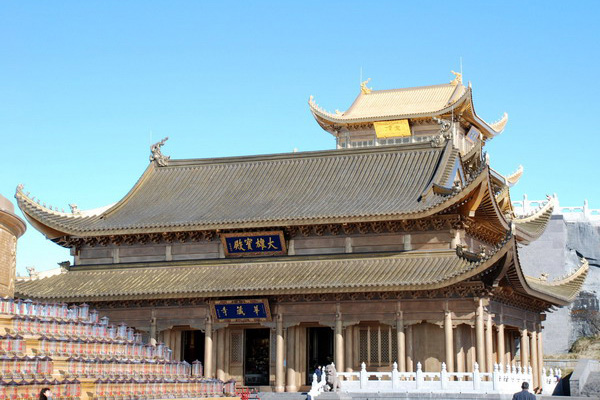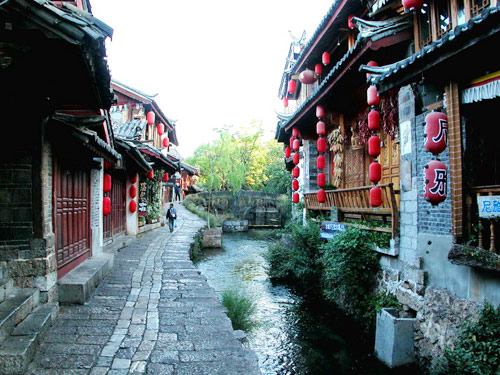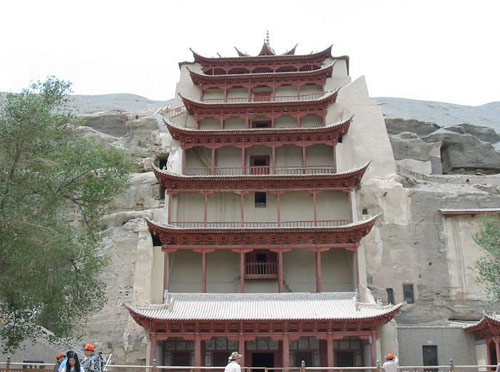The 15th day of the eighth lunar month is called “Mid-Autumn”, and the night “Night of the Moon”. Mid-Autumn Festival, also known as Moon Festival, takes places on that day when the moon is supposedly at its fullest and roundest. For Chinese people, the full moon is a symbol for family reunion. At the Mid-Autumn Festival, all the family members would gather together to taste moon cakes and appreciate the round moon. The date in the Western calendar changes annually. In 2011, the Mid-Autumn festival falls on Monday, September 12.
Mid-Autumn Festival originated from the Moon sacrifices in ancient times. In ancient China, emperors followed the rite of offering sacrifices to the sun in spring and to the moon in autumn. Later aristocrats and literary figures helped expand the ceremony to common people. Historical books of the Zhou Dynasty (1066 B.C. – 221 B.C.) have had the word “Mid-Autumn”. At that time, people hold ceremonies to greet winter and worship the moon. The custom was passed down to the Tang Dynasty (618-907 A.D.) when people enjoy and worship the full moon. In the Song Dynasty (960-1279), the 15th day of the eighth lunar month was formally named the Mid-Autumn Festival. People sent round moon cakes to their relatives as gifts in expression of their best wishes of family reunion. And since the Ming (1368-1644) and Qing dynasties (1644-1911), the custom of Mid-Autumn Festival celebration has become unprecedentedly popular.
How to Celebrate Mid-Autumn Festival
Mid-Autumn Festival is an evening celebration for family reunion. Most activities follow the custom of worshipping the moon in ancient times. At the night of Mid-Autumn Festival, people invite friends and relatives to hold family reunion feast for celebration. After the feast, they would sacrifice moon cakes, fruits and wine to the full moon at the open space. Every one prays for the blessing of Moon Goddess. Then, they would admire the full moon, taste moon cakes, drinking, chatting even dancing under the moon. Actually, contents of celebration varied in different areas of China: putting pomelo rinds on one’s head, lighting lanterns on towers, floating sky lanterns, burning incenses to the moon, planting Mid-Autumn trees, perform the Fire Dragon Dances…
Moon Cakes
Moon cake is an indispensable delicacy on Mid-Autumn Festival. For Chinese people, those palm-sized round cakes symbolize family unity and perfection. They eat moon cakes to express their homesickness and love for their family member. A traditional moon cake is made of a sweet bean-paste filling with golden brown flaky skin. And a golden yolk from a salted duck egg, which looks like a bright moon, was placed at the center of each cake. Over time, both crusts and the fillings of moon cakes have diversified, for changing taste preferences. Moreover, to adapt to today’s health-conscious lifestyle, fat-free and even high-fibre low sugar moon cakes also appeared. Customers can freely choose and pick the size and filling of moon cakes that suits their taste and diet.
A China tour to enjoy Mid-Autumn Festival by tasting moon cakes, listening to famous fairy tales – Chang’e Flying to the Moon, taking part in sacrifice rite, a reunion part … which offer you a impressive experience of Chinese festival culture.
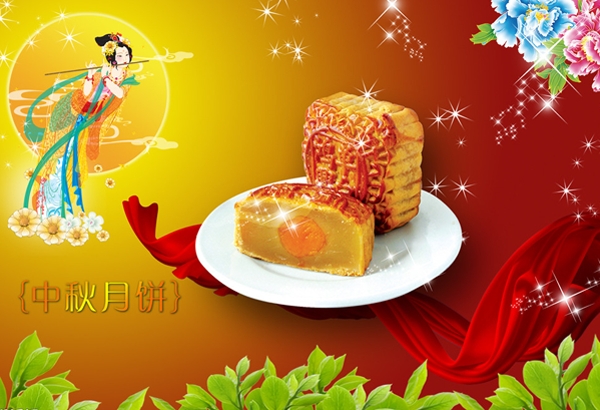 |
| Moon Goddess & moon cakes at Mid-autumn Festival |
Origin
How to Celebrate Mid-Autumn Festival
Mid-Autumn Festival is an evening celebration for family reunion. Most activities follow the custom of worshipping the moon in ancient times. At the night of Mid-Autumn Festival, people invite friends and relatives to hold family reunion feast for celebration. After the feast, they would sacrifice moon cakes, fruits and wine to the full moon at the open space. Every one prays for the blessing of Moon Goddess. Then, they would admire the full moon, taste moon cakes, drinking, chatting even dancing under the moon. Actually, contents of celebration varied in different areas of China: putting pomelo rinds on one’s head, lighting lanterns on towers, floating sky lanterns, burning incenses to the moon, planting Mid-Autumn trees, perform the Fire Dragon Dances…
Moon Cakes
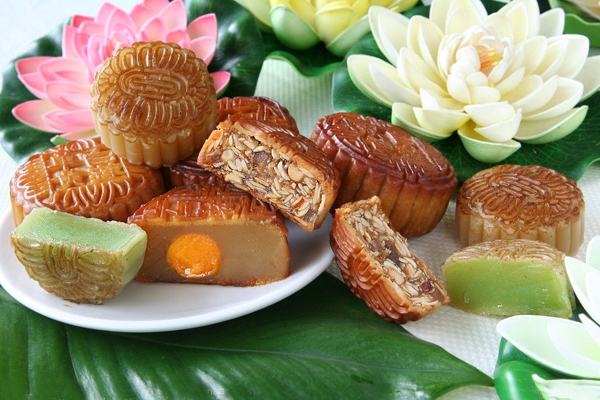 |
| various moon cakes eaten at Moon Festival |
A China tour to enjoy Mid-Autumn Festival by tasting moon cakes, listening to famous fairy tales – Chang’e Flying to the Moon, taking part in sacrifice rite, a reunion part … which offer you a impressive experience of Chinese festival culture.
